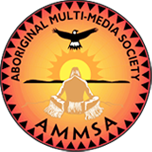Article Origin
Volume
Issue
Year
Page 9
The Royal Ontario Museum (ROM) is undergoing a transformation that will allow it to better showcase its many collections, including objects and artifacts that reflect the history, culture and diversity of Canada's Aboriginal people.
Those items-more than 1,000 and many that will be on display for the first time-will be displayed in the Gallery of Canada: First Peoples, the first permanent gallery dedicated to Aboriginal art and artifacts in the history of the museum. The gallery will also feature a theatre for the screening of films, an area for exhibition of contemporary Aboriginal art, interactive programming and space to allow for live performances.
The new gallery is just one portion of Renaissance ROM, an ambitious project that will see the 91-year-old museum's heritage buildings and galleries restored and the museum exhibit space expanded to allow for each of the museum's major collections to have its own permanent gallery.
Ken Lister, assistant curator of anthropology at ROM, said the museum's holdings of Native artifacts and art is one of the largest in the country and the world. It's so large, he said, that only five to 10 per cent of the collection will be on display at any one time, with pieces being rotated in order to showcase as much of the collection as possible.
"What were counting on is that this space will always be dedicated to First Peoples collections at the ROM here, as far as I am concerned, from now until forever," said Lister.
The gallery will explore Aboriginal culture from pre-history through to modern times, ending with a display that examines how Native people are a part of the museum and of the history of Canada.
"The final thing that people will see is a really large photograph of the Native iron workers who have been working on the construction of this museum," Lister said.
"The important part of the gallery is to make sure that when people leave it that they are very aware that Native people are a strong part of this country's history and the contemporary world."
The First Peoples gallery was created with the advice of Native advisors from across the country who were invited to select and interpret artifacts that are of special significance to their communities.
One of the advisors was Elder Louis Bird of Weenusk First Nation, located on the coast of Hudson Bay.
Bird said he is happy to co-operate with ROM and museums in general as long as they aren't digging up old burial sites in order to find items to display.
While Bird said museums and exhibits are not something that is a part of Native culture because Native people do not have a history of showing the items from their lives past and present, he understands the role the museum can play in educating and informing non-Native people about Native culture and artifacts.
"My effort has been to try and collect the history of our people and to try and understand the difference between European (culture) and our First Nations," said Bird.
"It's to show the public the items that are created from Aboriginals from across Canada and to explain in detail exactly where this particular item came from and how it is made. It is to educate the public about the history and to know the different kinds of items."
For more information about the Royal Ontario Museum and the Gallery of Canada: First Peoples, visit the ROM Web site at www.rom.on.ca or call the museum at 416-586-5549.
- 2881 views
